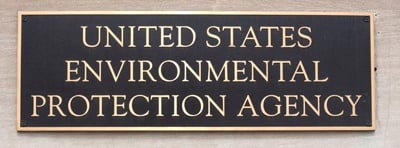You’ve probably heard your accountant mutter something about your balance sheet, followed by something this or that about... The post Understanding Your Balance Sheet appeared first on Clic.
You’ve probably heard your accountant mutter something about your balance sheet, followed by something this or that about profit. You’re not alone if your eyes glazed over and all you really absorbed was that your company isn’t going under (that’s all that matters, right?).
Of course your profit matters, but your balance sheet is more than just another confusing report that shows up on your accounting software. It’s one of the most powerful tools in your financial toolkit, if you know how to use it.
So, what exactly is a balance sheet?
In short, it’s a snapshot of your business’s financial position at a single point in time. Unlike the profit & loss, which covers a period (a month, quarter or year), the balance sheet says: “Here’s what the business owns, what it owes, and what’s left for the shareholders right now.”
There are three main sections:
- Assets: what the business owns
Assets are split into two categories:
Current assets
These are short-term and expected to be converted into cash within a year. Think:
- Cash in the bank
- Accounts receivable (invoices you’ve sent but haven’t been paid yet)
- Stock/inventory
- Prepayments (you’ve paid for something like insurance upfront)
Non-current assets
Longer-term things that help you run the business:
- Property, plant and equipment (computers, vans, coffee machines, etc)
- Intangible assets (goodwill, trademarks)
- Investments
- Liabilities: what the business owes
Just like assets, these are split into:
Current liabilities
Things due within the year:
- Accounts payable (money you owe suppliers)
- VAT or PAYE you owe HMRC
- Accrued expenses (costs you’ve incurred but haven’t been billed for yet)
- Short-term loans
Non-current liabilities
Longer-term debt like:
- Bank loans
- Hire purchase agreements
- Director’s loans not repayable in the next 12 months
- Equity: what’s left over
Equity (also called capital and reserves) represents the owners’ interest in the company. It includes:
- Share capital (what the shareholders put in when the business was formed)
- Retained earnings (profits from previous years that haven’t been paid out)
- Current year profit or loss (until it’s finalised at year-end)
If your balance sheet shows positive equity, it means the business owns more than it owes. Negative equity? It’s a likely sign of financial distress, but don’t panic – just a strong reason to check in with your accountant.
What can your balance sheet actually tell you?
Quite a lot, actually. A quick scan of your balance sheet can answer big questions:
- Are you sitting on too much stock?
- Do customers owe you more than you’re comfortable with?
- Do you have enough cash to pay your bills?
- Are your liabilities growing faster than your assets?
And more strategically:
- Is the business building wealth year after year?
- Are you too reliant on short-term borrowing?
- Can the company afford to invest or expand?
Common mistakes people make with balance sheets
- Ignoring it altogether
If you only ever look at your P&L, you’re missing half the picture. You might be profitable but running out of cash, or building up unmanageable debts. - Misclassifying items
Putting a short-term loan under non-current liabilities? That’s a no. Same goes for mixing up prepayments and expenses. - Forgetting to update asset values
If your balance sheet still shows a van you sold three years ago, it’s time for a tidy-up. - Letting the director’s loan account spiral
If you’re regularly drawing money from the business without recording it properly, this can result in a nasty tax bill.
How often should you review your balance sheet?
Quarterly is a good baseline. Monthly if you’re in growth mode or making big financial decisions. And don’t just glance (or worse, be intimidated by it) – get curious. Ask questions. Look for trends. Get help from your accountant if you’re not sure how to read it properly.
And the next time someone mentions “balance sheet”, you won’t have to pretend you know what they’re talking about.
You’ll actually know.
The post Understanding Your Balance Sheet appeared first on Clic.






